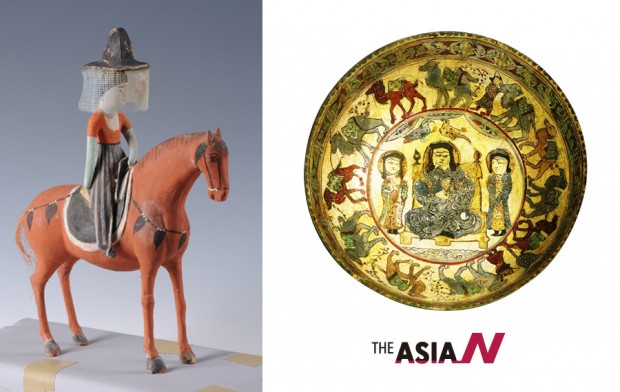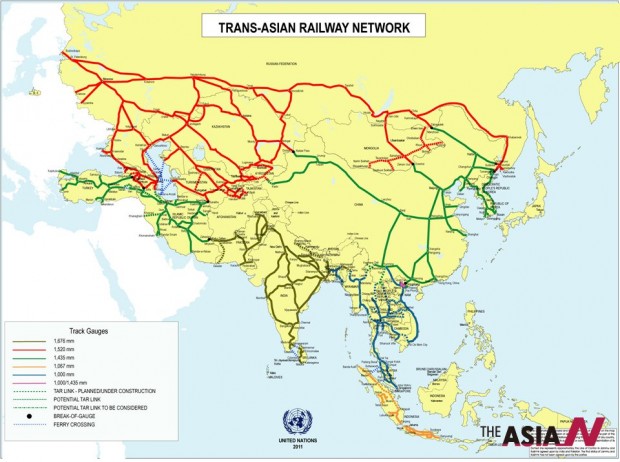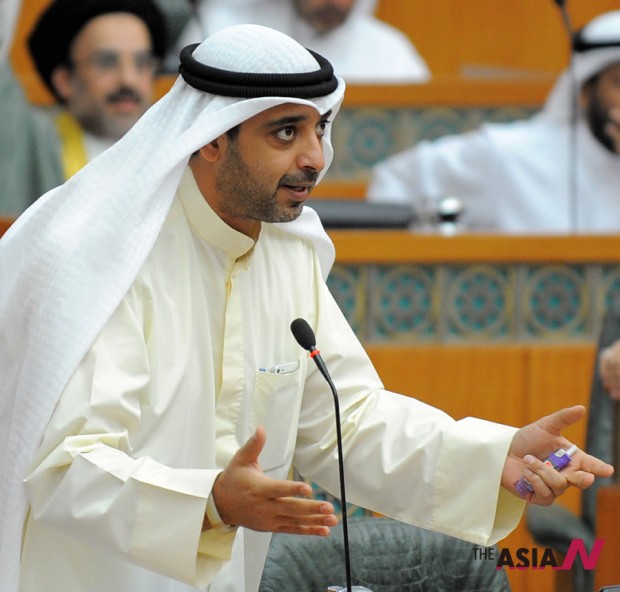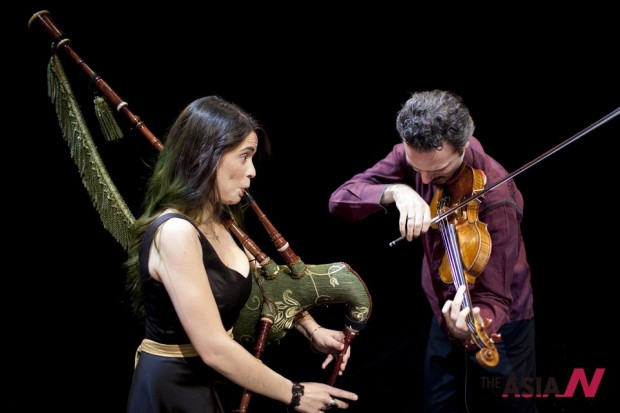The Silk Road re-invented
Arabs – among other nations – travelled to the East in the past, by way of exploration. They were merchants in search of raw materials to earn their living, scholars in pursuit of knowledge, conquerors to spread religion and extend the boundaries of the emerging Islamic empire, or, as a reaction and on a journey backwards, to fight against counter-conquests or invasions by warriors from the Far East who also planned to add new territories to their lands, like the Tatars, Mongols, and Persians.
But the Arabs’ centuries-long journeys continued, even after the Silk Road and sea routes, which in times of war and peace linked our near and middle Arab East with Asian countries, ceased to exist, as reported in historical facts or legends.
The Silk Road, as we know it, is the name of the collected transportation lines of roads that started from China in the Far East and passed through the Asian continent to the West, all the way to the heart of Europe.
From Chinese sources we can find the beginning of the road at several major cities and locations. The first road stemmed from Chang’an (now Xi’an) until it reached the oasis of Dunhuang, where it was divided into the northern and southern branches of the Silk Road tree, to cross the desert, beginning with the oasis of Dunhuang and reaching the city of Kashgar in China’s far northwest Xinjiang region near the border with Pakistan, Kyrgyzstan, Uzbekistan, Afghanistan, and India.
My first visit to Kashgar during the summer of 2008 showed me the importance of its strategic location on the Silk Road. So it is not surprising that Kashgar was and is still considered the western gate of China.
The days we spent in the cities of the Silk Roads in China, Uzbekistan, India, Iran, and other countries, were reviving the idea that such routes were the main reason for all glories and discoveries achieved by ancient civilizations. Scientists, scholars, linguists, writers, artists, travelers and diplomats were able to easily travel from one country to another, between East and West, from one language to another.
The eminent historian Abdul Hadi Altazi, member of the Royal Moroccan Academy, wrote in reference to the famous traveler Ibn Battuta, mixing history and life, and giving evidence from Ibn Battuta’s travels, which he considered historical “Wikileaks” of the time. Among the things he showed was part of a document engraved on wood in the capital of the Maldives mosque found by Ibn Battuta during his visit in AH 744 (AD 1344).
Hussein Ismail, deputy Editor-in-Chief of the China Today magazine, who spent about two decades in China where he got quite familiar with the growth of this economic giant, wrote about a journey from China to the East: the seven travels of the Chinese Sinbad admiral Qing Kha. “He was different from European sailors in that in his seven travels across oceans and seas, he was a messenger of peace, making friends and exchanging presents, culture and knowledge, whereas the others were pirates and colonialists who used all means to achieve their ends, as Magellan did. Magellan’s discovery of a new route to India was not designed to identify these countries and their cultures, but rather to occupy them and plunder their wealth.”
Arabs’ centuries–long journey
Besides the two opposite travels one written by Ibn Battuta and the other told about Qing Kha, there are hundreds of travel books that keep many secrets of the Silk Road history.
Some examples of these travels start with King Mu (Mu Wang), West Chou king and the earliest reputed Silk Road traveler. His travel account, Mu tianzi zhuan, written in the 4-5th century BC, is the first known travel book on the Silk Road. It tells of his journey to the Tarim basin, the Pamir Mountains and further into today’s Iran region, where the legendary meeting with Xiwangmu took place. He returned via the Southern route. The book no longer exists, but is referred to in Shan Hai Zin, Leizi, Mu Wang Zhuan, and Shiji.
Another wonderful selection is Hwi Chao, a Korean monk who grew up in China. He traveled to India via sea route and lived there for several years and visited various Buddhist kingdoms in India, Persia, and Afghanistan. On his returning journey, he traveled to Kashmir, Kabul, passed the Pamirs and entered Xinjiang from Tashkurgan, then skirted around the Taklamakan desert from the northern towns of Kucha, Turfan and Hami. His account Wang wou t’ien tchou kquo tch’ouan or The Record of Five Indian Kingdoms provided valuable information on the Islamic and Buddhist distribution among the Central Asian kingdoms during the 8th century. His book had been lost since the Tang dynasty until an incomplete copy (14 pages, approximately 6000 words) was miraculously discovered by the French explorer, Paul Pelliot at Dunhuang cave in 1908.
Even from the farthest point of Europe, we may note the travel of Pero Tafur, who was a native and notable of Cordoba, born ca. 1410, he traveled from Spain to the Eastern Mediterranean and back. While not a merchant, he was very interested in commercial affairs and well connected with the trading networks. He was in Egypt, the Black Sea region and in the sad remains of the dying Constantinople. While he thought about going to India, the closest he came was a conversation with the famous traveler Nicolo di Conti, whom he met on the latter’s return journey from South Asia.
In the bazaars along the Silk Road, we could ask: What was attracting people, the sellers and buyers in large markets? What goods were being carried by caravans of the Silk Road? You will find that the Russians were sending their wares such as fox and polar bear furs. You would find in each market, incense sticks needed for Buddhist temples. Tea was mainly there. Honey was brought from every Asian source. There were silver, golden, and wooden crafts, metal arrows and military armor, carpets, ornaments, and rice with all the dried foods. They were selling everything coming from everywhere. They sold silk. And, with trading came the cultures, tongues and dialects, art and literature, and emigrated scholars, which was the importance of the Silk Road that emerged as a lifeline of the world.
I think that such books are the inspiring touch that marked the last century, as we could easily recognize how many nations were eager to re-live the Silk Road experience.
If you surf the internet looking for the Silk Road, you will not only find those ancient travels, but you shall read about musical bands, car races, cultural festivals, dance bands, video games, research groups, documentation projects and so on.
For example, the repertoire of the Silk Road Ensemble includes traditional music (both as an oral tradition—passed down from generation to generation—and in melodies arranged by and for members of the Ensemble) as well as newly commissioned works, many of which combine non-Western and Western instruments, creating a unique genre that transcends customary musical classification.
Kuwait eyes ‘Silk City’ projects
Among some of the notable projects is The Trans-Asian Railway (TAR), a project to create an integrated freight railway network across Europe and Asia. The TAR is a project of the United Nations Economic and Social Commission for Asia and the Pacific (UNESCAP). The project was initiated in the 1960s with the objective of providing a continuous 8,750-mile (14,080 km) rail link between Singapore and Istanbul, Turkey, with possible further connections to Europe and Africa. Progress in developing the TAR was hindered by political and economic obstacles throughout the 1960s, 1970s and early 1980s. By the 1990s, the end of the Cold War and normalization of relations between some countries improved the prospects for creating a rail network across the Asian continent. The Trans-Asian Railway system will consist of four main railway routes including the existing Trans-Siberian railway, which connects Moscow to Vladivostok and will be used for a portion of the network in Russia. Another corridor to be included will connect China to Korea, Mongolia, Russia, and Kazakhstan. In 2003, the president of Kazakhstan proposed building a standard gauge link from Dostyk on the Chinese border to Gorgan in Iran.
In August 2010 issue of National Geographic, Brett Forrest wrote, “The Iron Silk Road will launch a new chapter in the history of the Caucasus. After the Soviet Union collapsed in 1991, the newly independent republics of the southern Caucasus—Georgia, Armenia, and Azerbaijan—regained strategic importance. A realization of the enormity of the oil and natural gas reserves lying beneath and along the Caspian Sea ignited a scramble to lay pipelines across the southern Caucasus to bring those resources to the European market.
Today the pipelines are operational, and the BTK is being built to grease a trade boom, transporting European goods east and petroleum products west across the southern Caucasus. Once completed, by 2012, the railway will begin at the Azerbaijani capital of Baku and travel through the Georgian city of Tbilisi, before carrying on to Kars, a Turkish post town on the southwestern lip of the Caucasus region.”
National Geographic (May 1969) once described Kuwait as “the Middle East’s Aladdin’s lamp.” This was not a linguistic exaggeration by the writer, but is read in the context of the huge projects that Kuwait had planned for home and overseas prosperity. But the crises and wars in the region stopped the lamp from playing its planned role. However, we look forward to the future in hope that it will be a real lamp, rather than a magic one, which lights our road by powerful hands, brilliant minds and a strong will to rediscover Asia’s treasures according to the constitution of the future. I recalled this when I read the details of Kuwait’s Silk City, called in Arabic “Madinat Al-Harir.”
The State of Kuwait has set aside KD 35bn of its bumper petrodollar earnings towards the Silk City project, a harbor, railway, and metro system aiming to diversify its oil-dependent economy to become a regional trade and financial center.
This project is the first five-year development plan by Kuwait in a span of more than two decades, and part of the $77 bn Silk City will be financed by this plan. The project aims to revive the ancient Silk Road Trade route by being a major free trade zone linking Europe and Central Asia. Located at the northern edge of Kuwait, near the Iraqi border, the Silk City of Kuwait will start construction after the passage of the budget in the next parliament according to Sheikh Mohammed Al-Abdullah Al-Mubarak Al-Sabah, the Kuwaiti Minister of State government spokesman.
A new Silk Road through media
In an interview with CNN in Arabic he said, “Silk City will be an integrated city, home to more than 700 thousand people, designed with more means of communication and modern technology and will be the largest reconstruction project of Kuwait in its history and will be completed during the next five years. It will be a key factor to attract local and foreign investments and reconstruction for 15 years to come.”
Such a world bazaar will redefine the meaning of a modern city as well as re-invent the Silk Road idea. And we may ask ourselves what kind of media parallel projects could accompany such a huge economic plan? Actually, the Silk Road cannot be safe, fast and successful without media support. The question is: what can be done? It is a question open for those who can see the Silk Road project as a peaceful way to know each other on all sides, as ignorance is the friend of our main enemies: poverty and illness.

An equestrian statue shows a well-to-do woman traveler on the Silk Road wearing a broad-rimmed hat, with a veil hanging from the rim of the hat. This statue, veil included, is more than a 1000 years old (left). A Chinese plate decorated with Silk Road caravan(right)
In the very first newsletter greeting of our Arabic version of The AsiaN, Next News Network, I wrote that our media window is a new Silk Road. Today, nations are suffering from disasters made by people and nature. Millions of human beings are scattered, among them are emigrants, the exiled, and lost, as if fate were drawing a final end for humanity.
The burden of wars is too heavy to carry on with for women who lost their children, as well as for sons and daughters who lost their parents. But, all of this does not mean that we should lose hope. No dictator is immortal. No typhoon is forever lasting. No war is to burn if we insist on burying it. But we have to work together to make the dream come true. The start could be shy, humble, but with continuous and hard work we can make miracles.
For Arabs, Asia is two thirds of the world. Asia is the birthplace of heaven and land religions and a keen neighbor in good and bad circumstances. So, when Asia wants to shake hands with us, it means opening a new era, or as I like to name it, a new Silk Road through media, where opinions and experiences are exchanged for a better common future.
When our Arab delegation came to Korea to prepare for the launching of The AsiaN in Arabic, we did not think too much of the far distance between Egypt and Korea. We were not afraid of visa challenges nor the different foods abroad described by myths or facts. We, men and women, old and young, had a message: we might be different but we have one goal, which is to build a bridge of trust and understanding.





























































